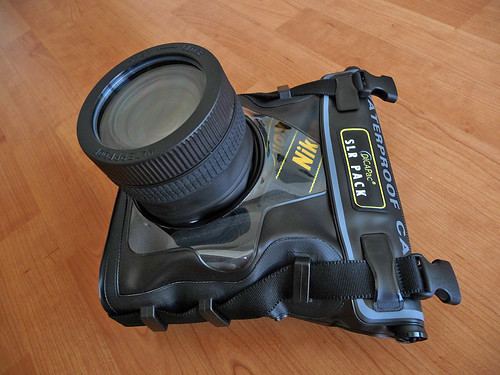WikiPack frees your personal data from being locked into proprietary data formats that can only be used with proprietary apps, and brings it alive as your own hosted website. There’s nothing particular unique about that, loads of sites provide a means of storing and retrieving your own universe of personal data, but none quite like WikiPack
In the beginning, there were pages
I came from using bespoke personal information managers that kept my data locked away in their own mystical archives, to going almost full circle to plain-text solutions like Simplenote. The driving force was the iPhone really; I needed access to my notes from multiple devices. I mean, I love Yojimbo, but guys, an iPad version that’s read only? It was with a heavy heart that I realised I needed something more.
For a while all was well, especially with the discovery of native Simplenote clients like Notational Velocity, and Brett Terpstra’s awesome nvAlt. I started migrating my notes over to Simplenote pages, but I soon realised that there was something lacking, something that I missed from my usage of Yojimbo - simple text formatting, and images.
I like to research stuff. I’ll take an interest in something, like an iPhone accessory, or a camera lense, or a fountain pen, and get obsessed with it. I’ll want to know everything about it, all the different models available, different prices, and I’ll want links to reviews, and photos, all tied together into a handy page. Yojimbo was great for that, plain text, not so much.
Then I discovered Markdown, and my life changed. Seriously! Here’s an excerpt from the Markdown philosophy:
Markdown is intended to be as easy-to-read and easy-to-write as is feasible.
Readability, however, is emphasized above all else. A Markdown-formatted document should be publishable as-is, as plain text, without looking like it’s been marked up with tags or formatting instructions.
That sounds too good to be true - human readable plain text that can be rendered as a formatte page? It really is the best of both worlds. My Simplenote archive started migrating over to Markdown files, as I took advantage of the portability of plain text, and the formatting power of Markdown.
Enter the cloud
At first, I had Markdown files sprinkled all over my filesystem. But again, it was the iPhone really that drove the search for something that can keep all my files together, and also make them accessible to all my various devices. Dropbox serves that need perfectly.
I recently upgraded to a new laptop, a beefy Macbook Pro to serve as my work machine, and for the first time my Documents folder is empty, barren, bare. Well, of documents anyway, I seem to have put my development source code folders in there for want of somewhere better to put them. But my documents, mostly Markdown pages, now live in the ubiquitous Dropbox folder.
Now I had my Markdown pages in a single place, and apps to access them on my iPhone, iPad, and my Mac. There’s was only one piece of the puzzle missing - a means of linking them all together
Linking it all together
It’s great having a page for lenses, and a page for the DSLR I’m looking at, and another page with links to various photography tutorials, but as stand-alone pages, relevant information ends up being fragmented instead of tied together. There’s always search, and tagging, but when you’re focussing on a particular area of interest it’s really great to have everything tied together in one place. That’s where WikiWords come into the picture.
By augmenting my Markdown pages with simple WikiWords, I can link them together and create my own personal wiki of sorts. I could, for example, make a photography page, which links to my lenses page, and my tutorials page, and my page with photos and links to reviews of the DSLR I’m lusting after, and easily navigate between them as my own little interactive website.
Trunk Notes
At this point, I’d like to give kudos to Trunk Notes for starting me on this journey. It’s the app which first turned my static Markdown pages into a living wiki. It’s an iOS app which syncs with Dropbox and renders Markdown pages as a wiki. It’s really very advanced, with lots of additional functions like todo lists. I highly recommend that you try it!
The thing is, I don’t get out much. (He says while typing away in a coffee shop…) OK, I go out a little bit, but for most of the day I’m parked in front of my Mac while I’m working, so I really needed to bring my wiki onto my Mac. Trunk Notes provides a web server which does that, but it must be running on an iOS device on the local network for it to be accessible. I needed something more permanent, and to that end I created WikiPack
WikiPack
So that’s what WikiPack is. I really need to work on a way to get that across in 7 words or less, but that about sums it up. It starts with pages, written in human readable Markdown, synced to the cloud in a Dropbox folder, and rendered to you as an interactive website.
I’m really excited about it, and I hope you’ll like it to. To try it out, go to http://wikipackit.com, and please let me know what you think!
cheers
